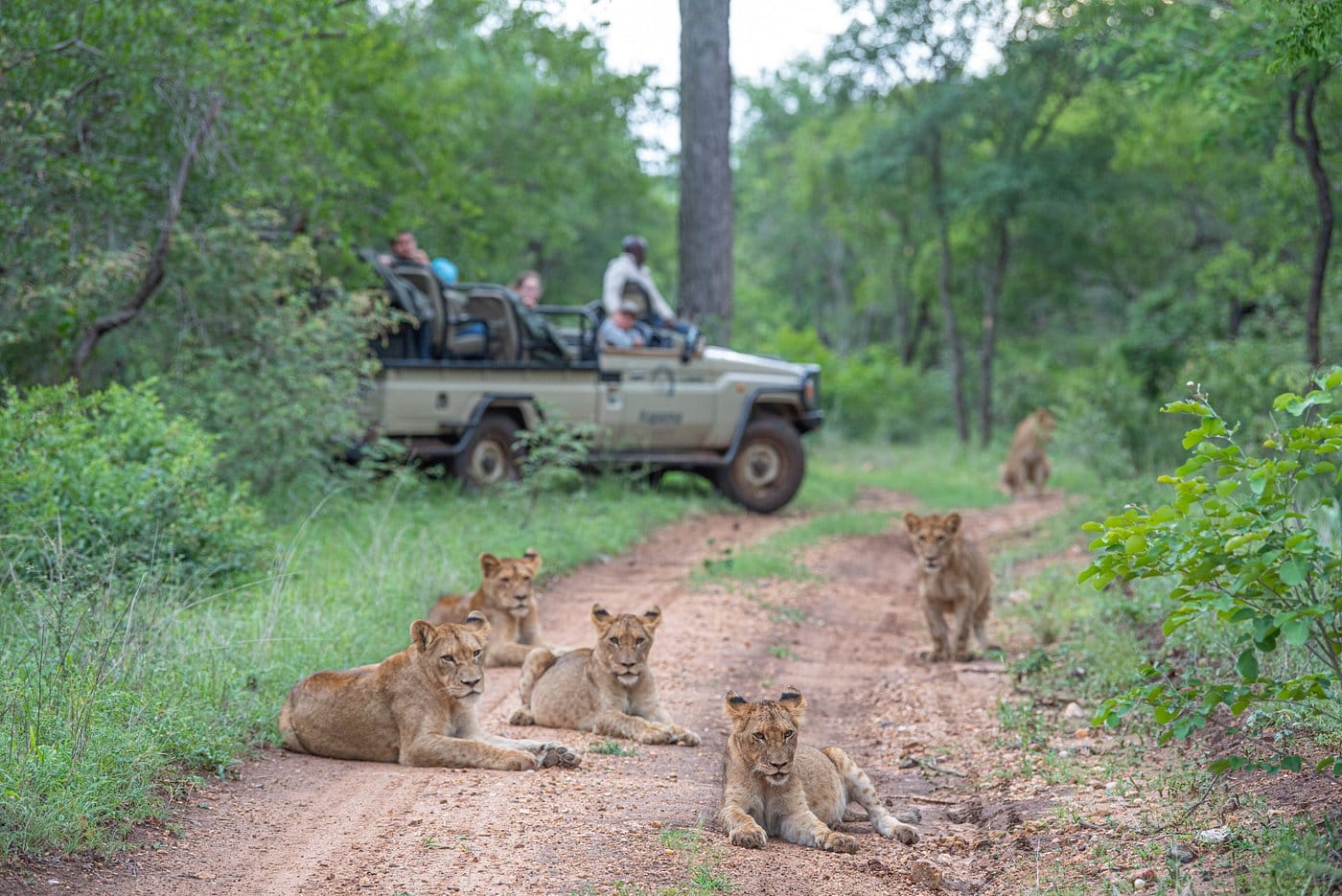There are many reasons why Kruger National Park is among the most famous parks in Africa. From the extensive biodiversity and numerous safari options to the large numbers of Big Five animal species, this is a top safari destination.
Must-Visit Areas in Kruger National Park

Imagine setting out on an afternoon game drive with the sun starting to dip below the horizon, and you spot a wild dog pack hunting and lion pride absorbing the last warm rays:
Southern Kruger: For White Rhino Sightings
Most of Kruger’s white rhinos occur in this region, so you have a good chance of seeing this endangered species here. Cheetahs and wild dogs can also be spotted. The many granite outcrops in this area create the ideal habitat for klipspringers, baboons, and leopards.
Birders should focus on the river habitats for sightings of the purple-crested lourie, green pigeon, African fish eagle, African goshawk, white-crowned plover, black duck, and white-fronted bee-eater.
Central Kruger: Home to Large Lion Prides
The flat, open grasslands in the central area of the Kruger attract large herds of grazing animals, including zebras, wildebeest, and buffaloes. Due to the high density of prey species, lion prides thrive here. Game drives in this region can also bring sightings of hyenas, cheetahs, and leopards, as well as elephant herds.
Northern Kruger: Birdwatching Destination
The northern part of the park is less crowded, making it ideal for travellers looking for a more secluded South Africa safari experience. It’s also the perfect place for a birding safari because of its diverse habitats, including wetlands that support tropical species.
The yellow-billed oxpecker, Arnot’s chat, broad-billed roller, and crested guineafowl are a few species that can be found here.
When’s the Best Time to Visit Kruger National Park?

The best time to visit Kruger National Park is during the dry season, from May to September. This time of year sees little to no rain, so animals gather around remaining water sources, making game drives eventful. October to April – the wet summer season – is ideal for birdwatching safaris as migratory birds fly into the park.
Wildlife Found in Kruger National Park

Kruger is a Big Five safari destination, so you’ll likely have sightings of rhinos, elephants, buffaloes, lions, and leopards. Wild dogs (although rare), cheetahs, and hyenas are also found here, as well as hippos and giraffes. For birders, over 500 species of birds inhabit the park, including 50 migratory species.
How to Get to Kruger National Park
You can fly to Skukuza Airport (flights are available from Cape Town or Johannesburg) or Kruger Mpumalanga International Airport. From either one of these airports, you’ll arrive at your accommodation via lodge transfer.